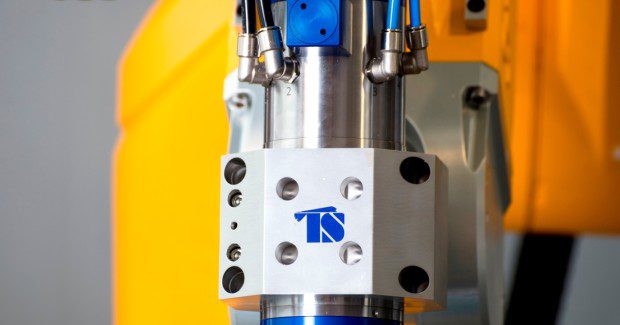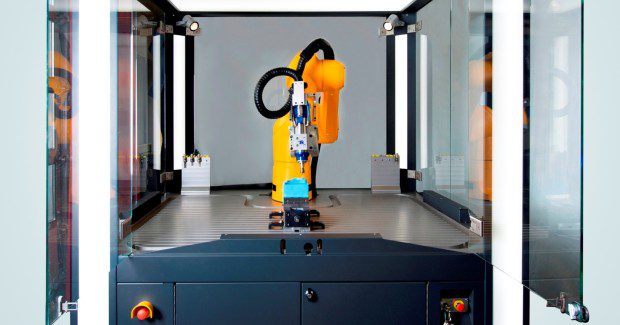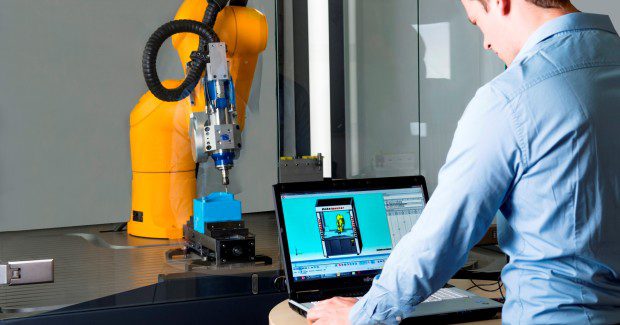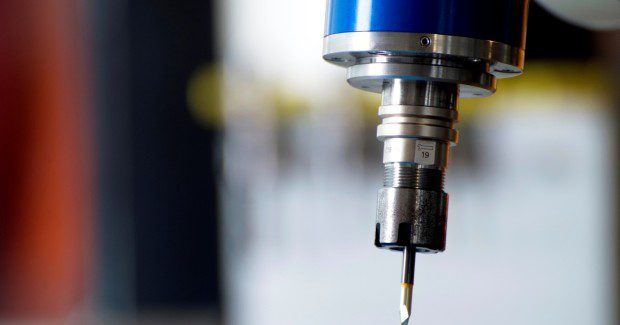Machine Tool 2.0: Milling with Robots
A robot can now replace a machine tool in certain applications, bringing a high level of flexibility to use different tools in the 3D space that changes the way processes and component design are viewed.
Posted: October 31, 2015
Very high demands for part precision require CNC machine tools that are trimmed to μ-level accuracy. But for a number of components that do not require this extreme degree of precision machining, the robot is now coming into play, bringing a high level of flexibility to use different machining tools in the 3D space that changes the way processes and component design are viewed. For example, machining medical components with robots instead of CNC machine tools is gaining importance because the robot has become highly flexible and can be universally adjusted to different tasks with minimal, often acceptable limitations to precision. Above all, this sort of automation results in very cost-effective machining for medical component applications.
As a machining cell, a robot and machining room can form an integrated unit to be used wherever needed as a module of a universal machine tool in production, as seen in the RoboBox from MBFZ toolcraft GmbH (Georgensgmuend, Germany). Depending on the equipment, this machining cell can perform classic metal turning, milling, polishing and grinding sequentially to make and refine a medical component on the spot. The 1,800 mm H x 1,800 mm W x 1,800 mm D footprint of the RoboBox machining cell combines a 6-axis articulated arm robot by Stäubli inside a closed production module with a 7.5 kW water-cooled milling spindle. A slotted table ensures the precise fixing of the components. A zero-point clamping system or a round table can also be used.
CNC programs are integrated into the robot controls according to DIN 66025 so that the robot arm not only performs the loading and unloading of the parts, it also handles machining tasks through offline programming that uses the same programming language as CNC machine tools to create a continuous process chain where upstream and downstream tasks performed on the workpiece all use a common machine tool programming language for each operation. All of this means the application now defines the system, not the system the component.
Milling is the standard machining operation for the RoboBox, but the robot can switch tasks by fetching another tool from the tool magazine to perform other finishes and post-processing options for many tasks on various materials, such as deburring injection molds, through unrestricted access to the component without having to turn it over. The robot’s working area can be expanded further by using simultaneous or indexed external linear or rotary axes to save lots of time through faster turnaround cycles to the finished component.
The closed machining room is fitted with manual chipping extraction, which can be automated if desired. Eight tool positions are available as standard for different machining tasks. The system can automatically take the desired tools without re-clamping. The tool changer can be expanded if the task requires it. The operator selects one of two modes: the component is either supplied to the process (remote TCP applications) or clamped and processed by the robot. The machining cell is custom-sized to fit the component configuration or range of tasks, so that large bodywork parts or components requiring high impact from the robot are processed using larger robots, while other tasks that are better suited to a medium-sized or small robot with enormous access options in the room. The machining room size varies according to the tasks specified by the user.
The RoboBox machining cell robot does not have to be ‘taught’ conventionally because all kinematic movements are programmed using the Mastercam Robotmaster software before starting work. All robot movements are visually recorded and optimized as kinematics through simulation, then loaded onto the machining cell hard disk prior to the start of actual work. Unlike teaching a conventional robot, no original or reference model is required. The robot find all paths independently from the first part and processes the components from batch size 1 to batch size N. Anti-collision protection is used for reliable machining that also increases the system availability.
What specifically can the RoboBox do better than a modern CNC machine tool? The articulated arm robot is used at points that would not be possible without re-clamping on a CNC machine. When the first step is complete, it takes up another task. Depending on the task, it can finish the component at various points without having to leave the construction space. In conventional machining operations, finishing parts complete could require a certain investment in special CNC machine tools that might not always be utilized. This machining cell combines one highly flexible system of hardware and software for completing parts for various applicationg for a reasonable price.










